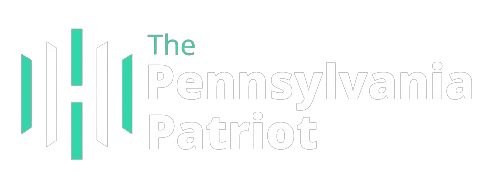Pennsylvania’s June 30 budget deadline for fiscal 2025 passed without a funding agreement, yet again. But despite the silence on the details, all sides — the governor’s office, Senate Republicans and House Democrats — expressed optimism that a deal was on the way. Soon.
Gov. Josh Shapiro’s office in particular has kept its cards close to its chest.
Asked repeatedly to discuss specific elements of the budget talks, Manuel Bonder, a spokesman for Shapiro, wrote in an email:Governor Shapiro and legislative leaders have worked difficult to finalize a budget that will benefit our Commonwealth. The Governor was engaged in positive, productive dialogue in Harrisburg with leaders from both parties – and will continue to do so in the days ahead as we work to close this agreement.”
The clearest picture yet of where the budget talks are at came from Senate Majority Leader Joe Pittman (R-Indiana), who addressed the Capitol press corps from a podium in a packed chamber Wednesday, just before the July 4 holiday.
Pittman called the ongoing negotiations “cordial” and “productive” and even praised his Democratic counterparts for their willingness to engage and compromise.
However, as last year’s fight over the proposed educational voucher program for private school students showed, the devil is in the details.
“If we don’t agree on everything, we don’t agree on anything,” Pittman said. “But I remain optimistic that we will complete this process in the next few days. Exactly how that will play out is an open question.”
Beth Rementer, a spokeswoman for House Democrats, said in a statement Friday: “We continue to work with all parties in good faith to agree on a budget that makes constitutionally required investments in public education, supports our world-class institutions of higher learning, grows our economy and continues to support the programs and services that Pennsylvanians rely on.”
Education
But Pittman’s press conference on Wednesday provided more details.
He mentioned the issue of financing the public education system as one of the obstacles.
In February, a Commonwealth Court judge ruled that the state’s current school funding system was unconstitutional. The ruling, written by a Republican judge The Renée Cohn Jubelirer case resolved a lawsuit filed in 2014 by parents, defense attorneys and multiple Pennsylvania school districts.
The problem, Jubelirer wrote, was a huge equity gap between the state’s poorest and richest districts. And advocates said the state may be underfunding its public education system by billions of dollars.
In June, the Democratic-majority House of Representatives passed a bill to send more than $5 billion over seven years to the state’s poorest school districts.
In his February budget speech, Shapiro called for more than $1 billion in modern education spending, nearly double last year’s budget.
Senate Republicans have rejected some of those proposals. The governor’s plan involves spending billions in surplus state funds, something Senate Republicans have been reluctant to agree to.
But Pittman on Wednesday characterized the current disagreement over school funding as less about how much the state will spend than how the money will be distributed.
“One of the biggest differences is not just education spending, but how that money gets to school districts,” Pittman said.
Pittman said Senate Republicans would like to see the funds allocated to districts based on census data, as opposed to what he described as the Democrats’ plan to have school districts self-report.
In February, Shapiro proposed what his office called a “new adequacy formula.” Currently, most funding for Pennsylvania public schools comes from local property taxes, which has widened the gap between schools in indigent and wealthy neighborhoods.
Taxes and $15 Billion Surplus
Another area of disagreement is the Senate Republicans’ plan to cut the personal income tax from 3.07% to 2.8% and reduce the gross receipts tax, which could impact electricity rates.
The tax cut bill passed the Senate, even winning support from many Democrats. But it never took up the House of Representatives.
The $3 billion cuts were essentially a counterproposal to Shapiro’s plan, which would have increased state spending by about the same amount, with a larger portion of the modern funds going to state schools.
Republicans also still want to enhance state funding for students attending private schools. schools, despite continued opposition from Democrats in the House of Representatives.
The so-called education voucher program, which would provide money to Pennsylvania families who send their students to private schools, was one of the biggest sources of bitterness in last year’s protracted budget negotiations.
Shapiro himself has been open to the idea, splitting from most Democratic state lawmakers, though he ultimately vetoed a budget line item to fund them last year. Republicans accused him last year of reneging on a deal to include them in the 2024 budget, and House Democrats have threatened to veto any bill that includes them.
According to Pittman, the issue of financing students attending private schools remains unresolved.
Last week, Sen. Judy Ward (R-Blair) introduced a bill that would provide a $6,000 per-pupil tax credit for families who send their children to nonpublic schools.
However, that idea was rejected by both House Democrats and Shapiro’s office.
At the news conference, Pittman also said the issue of expanding the existing earned income tax credit for individuals and companies that fund private school scholarships remains relevant.
Making college more affordable
It remains to be seen how Democrats and Republicans will resolve their differences over making college and university education in Pennsylvania more affordable.
In his budget speech, Shapiro proposed setting the tuition cap for most Pennsylvania residents at $1,000.
In turn, Senate Republicans last month passed a package of bills that included an alternative vision for lowering the cost of college education.
Their plan would focus on creating scholarships for students who want to pursue a career in Pennsylvania and put down roots in the state.
First and foremost, these are scholarships available to both in-state and out-of-state students, which they would have to repay unless they agree to work in-state for five years after graduation.
Another part of the plan would expand the existing Ready-to-Succeed Scholarship for low- and moderate-income students. It would lower the GPA requirement for students eligible for the scholarship from 3.25 to 2.5 and raise the household income limit for families of these students from $126,000 to $175,000.
The plan also calls for modern scholarships to be created for both domestic and international students, including those in foster care and those adopted as older teenagers.
Another unresolved question is what exact amount of total financing will be allocated to the state under the budget.
Asked by one reporter about the overall spending figure, Pittman said he thought it would be lower than the $48 billion Shapiro presented earlier this year. But when pressed for details, Pittman deferred.
“Until everything is agreed, nothing is agreed,” Pittman reiterated.
The budget is also expected to include increased funding for senior care, given Pennsylvania’s aging population.
Shapiro also unveiled a 10-year economic development plan that he hopes will assist attract corporate investment in agriculture, energy, life sciences, manufacturing, and robotics and technology.
Schedules have been set and changed over the past week, but for now, both the Democratic-majority House of Representatives and the Republican-majority Senate are scheduled to meet in Harrisburg on Sunday.

